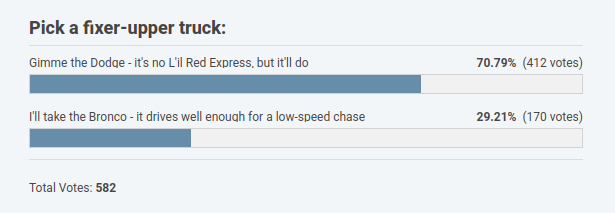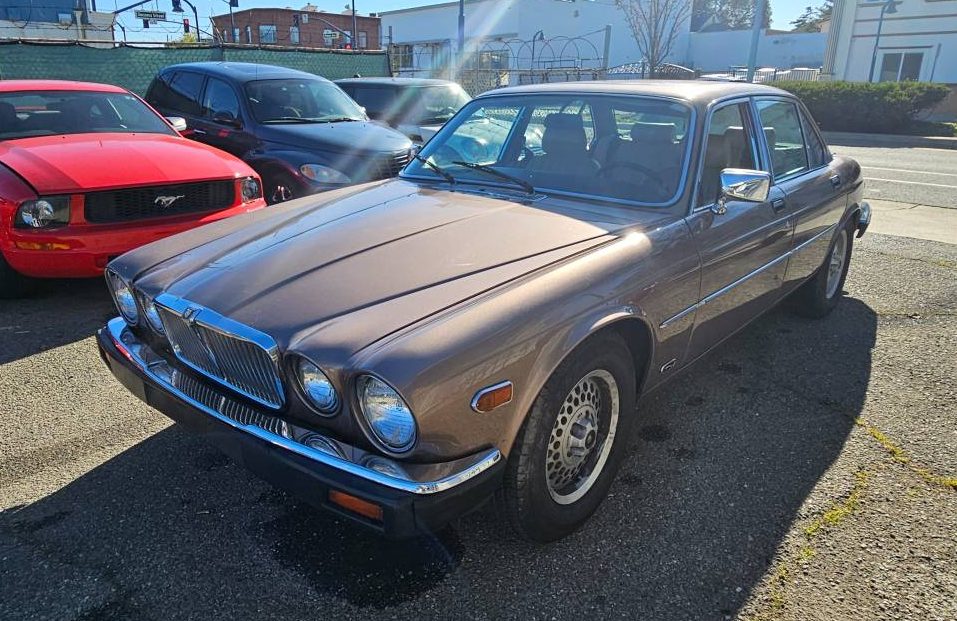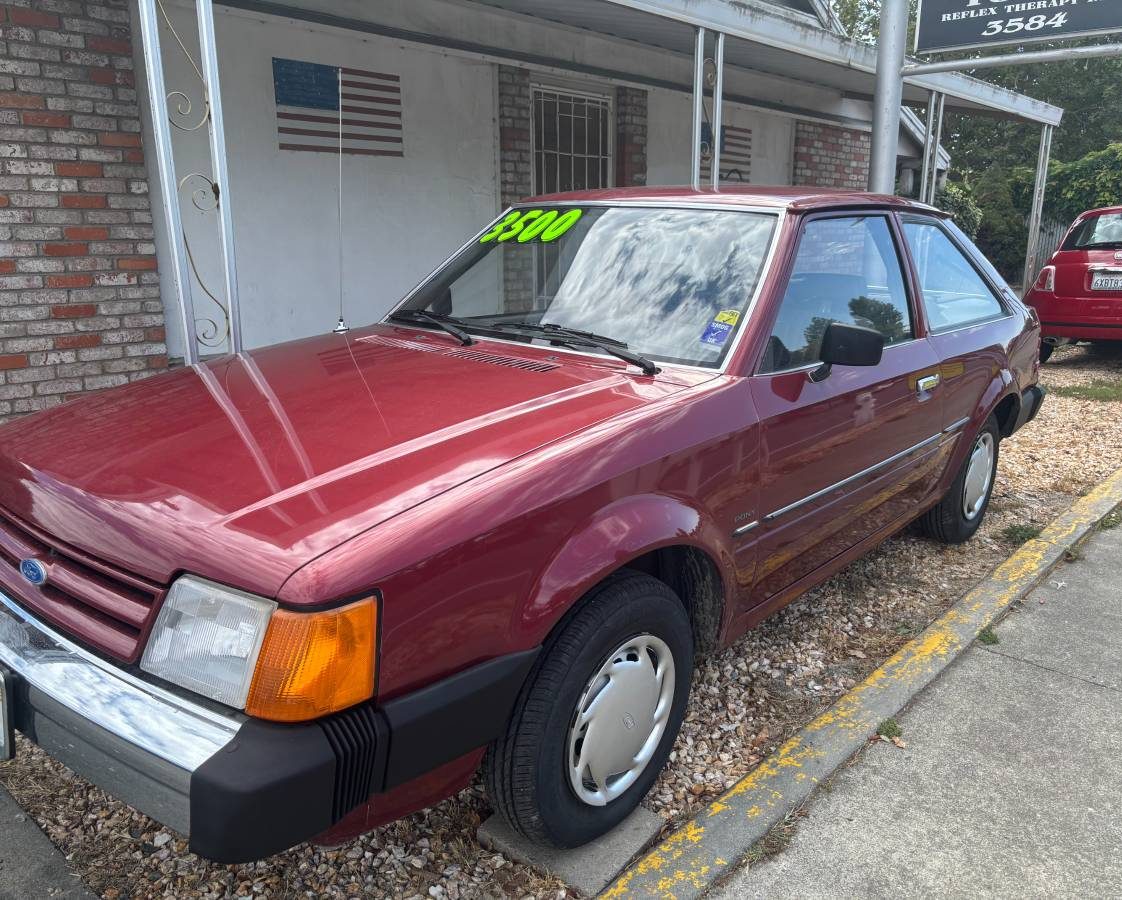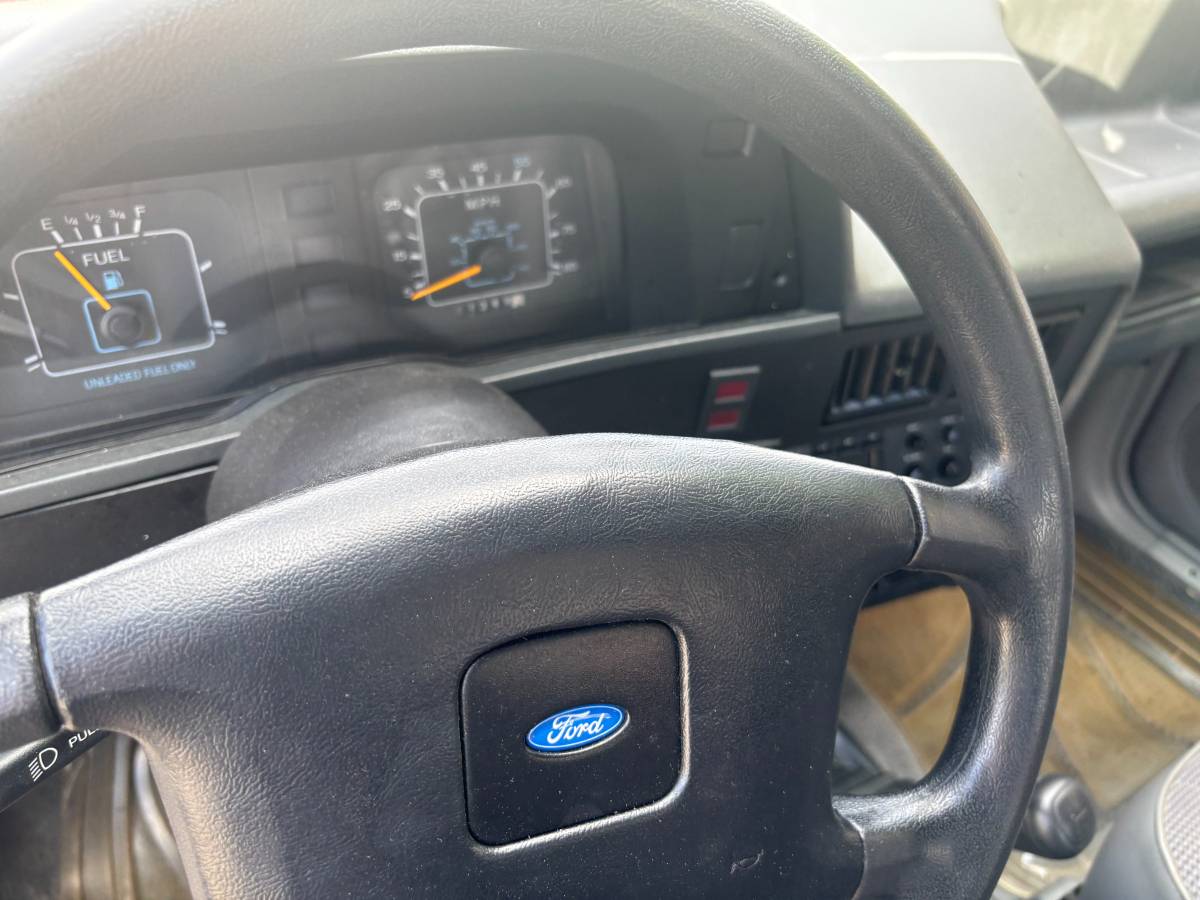Some people just love a car with all the bells and whistles. Power equipment and luxury touches aren’t options to them; they’re requirements. Others just look at all that stuff and see more things to break, and prefer a plainer, simpler motoring experience. Whichever side of that particular fence you’re on, I’ve got you covered today.
Yesterday we looked at a couple of trucks that needed some work. You know the old saying “looks aren’t everything”? I think we disproved it. The cool-looking Dodge pickup that needed a little mechanical love took an easy win over the good-running but hideous Ford Bronco.
I don’t blame you. When I first clicked on the Bronco ad, I assumed it was a derelict husk with way too high of an asking price. When I read that it actually ran and drove well, I decided to feature it, but I still didn’t (and don’t) want it. I have no need for that Dodge either, but if it’s between those two, there’s no contest.

If you’re a budget-conscious car lover, you know that used luxury cars, once they reach a certain age, can be found really cheap. Depreciation hits high-end cars much harder than it does mid-level models, so getting your hands on the fancy version can be as simple as waiting a few years. The values of cheap, simple economy cars drop like a rock as well, but after a while, nostalgia can start pushing prices of really clean examples back up. And that is how you end up with our two contenders today: the most expensive Jaguar of its day, and the cheapest Ford, now available for the same price. Let’s check them out.
1985 Jaguar XJ12 Sovereign HE – $3,500

Engine/drivetrain: 5.3-liter OHC V12, three-speed automatic, RWD
Location: Hercules, CA
Odometer reading: 114,000 miles
Operational status: Runs and drives well
As we all know, if you want to import a car into the US yourself, it has to be at least 25 years old. But that wasn’t always the case; before that law was passed in 1988, you could pretty much stick any car on a cargo ship, bring it over, make a couple of changes to things like lights and bumpers and emissions equipment, and you were good to go. Such cars were referred to as “gray-market” imports; they didn’t come through official channels, but they were more or less legal to own and drive. I suspect that this Jaguar is such a gray-market car, based on two things: first, Jaguar stopped selling the XJ12 in the US in 1980, and second, the Sovereign nameplate wasn’t used on high-level US model Jaguars; ours were called Vanden Plas.

Even though you couldn’t buy an XJ12 from Jaguar in the US in 1985, all the components were there, which probably made converting this car pretty easy. It uses the same “High Efficiency” (ha!) V12 engine and GM Turbo-Hydramatic 400 transmission as the XJS coupe, and the same body design as the XJ6. It was probably just a matter of fitting US-market XJ6 bumpers and side-marker lights, and maybe adding a catalytic converter from an XJS. It runs and drives well, according to the seller, but it does need to pass a smog test, and I don’t know how that works with gray-market cars. Knowing California, it probably involves some ritual chanting and possibly a blood sacrifice.

No matter which side of the Atlantic it was intended for, the interior of a Series III XJ is a nice place to be. This one looks all right; there’s a tear in one seat bolster and some wear on the carpet, but for the most part, the leather and wood are holding up nicely. One thing does need attention, however; the seller says the air conditioning is disconnected. I’m sure a specialty shop could get it hooked back up and running again, but at a price.

Outside, it has a few minor blemishes, but for the most part, it carries itself with the dignity and grace befitting an old Jaguar. The paint and chrome are both nice and shiny, and I would be very surprised if it had any rust. It’s got those cool “pepperpot” wheels, too, that you don’t see on US-market XJs.
1987 Ford Escort Pony – $3,500

Engine/drivetrain: 1.9 liter OHC inline 4, four-speed manual, FWD
Location: Santa Rosa, CA
Odometer reading: 61,000 miles
Operational status: Runs and drives well
All kinds of things that are available in Europe take on a different form here in the US. English hard cider like Strongbow and Blackthorn have added sugar here, to suit what they think are American tastes. We can’t get actual Kinder Eggs, because apparently we can’t be trusted to not let kids choke on the toys. And when Ford finally offered its celebrated Escort compact in the US, it was in a fattened-up, watered-down form that barely shared any parts with the European version at all.

The Escort was sold in a wide range of trims, but what we have here is the most basic of them all: the Pony model. It has no air conditioning, no power steering, nothing on the dash but a speedometer and a fuel gauge, and only four forward gears in its manual transmission. The engine is the same CVH four-cylinder as other Escorts, both American and European, displacing 1.9 liters and putting out 90 horsepower thanks to throttle-body fuel injection. This one has only 61,000 miles on it and has been treated to a fresh timing belt, along with new front brakes, new tires, and a new battery.

The interior of the Pony version was even plainer than regular Escorts, which weren’t what you’d call luxury cars to begin with. I had a couple friends with these, and I seem to remember the seats being fairly comfy, though not as good as Omni/Horizon seats, but the interior being pretty noisy on the highway. I think Ford skimped on the sound-deadening on the Pony model. Oddly, it does have one power feature, and it’s one you probably don’t want: motorized seat belts. I didn’t know these were available in the Escort as far back as 1987. I’ve had Fords with automatic belts before, and you get used to them, like you get used to anything, but they’re a safety feature I’m glad is dead and gone these days.

I have to make a confession: I actually have always liked the style of these cars, especially the two-door hatchback like this. They were everywhere for a long time, but time has had its way with most of them, and now seeing one this clean is a bit of a treat. It’s a pretty good color, too. I believe the plastic wheel covers are aftermarket, or from another Escort; as far as I remember, the Escort Pony came with nothing but silver-painted plain steel wheels.
Some people like their cars nice and simple; others want all the toys. And some people, like my dad, change their minds after a while: the same guy who once special-ordered a slant-six Plymouth Barracuda with no options, and was too cheap to pay for a factory stereo in a new VW Golf, bought for his last car a Chrysler 300C with damn near every option in the book on it. Dad’s gone now, and the Chrysler is mine, and I have to admit all the power toys are nice to have. But I do miss his old stripper models. There’s an earnestness there that you don’t often get with cars these days. But what about you? Given the choice between a Jaguar so fancy it wasn’t even offered here, and the barest-bones Ford Escort ever to roll out of the factory, which one are you driving off in?









I’ll take that mint Escort. I’m not interested in having a project car. And I think that mint Escort would make for a great C&C/radwood vehicle.
I’m actually a little shocked that the rat’s nest of an XJ12 won.
I voted like I wanted the damn thing in the running, to run.
I find it hard to believe the Jag will move under its own power without major interventions within a month of ownership.
The Jag is curious. At first I’d suppose it could be a Canadian car (the Series 3 with a V12 was sold in Canada through 1992), but those were all called Vanden Plas.
My ex had this exact spec Escort Pony back in the 80’s. It was great for living in the city, and it did fine on long road trips. It was stolen from the street in front of our house in San Francisco. We were flummoxed; why would someone steal the cheapest car on the block? The cops said it was to be stripped for parts, and sure enough it turned up 2 days later stripped and dumped. Out of nostalgia I voted Escort.
Okay automatic seat belts are not a popular feature, although I lived during That requirement and they were not that bad. I bet our members here could list at least a dozen car features that were worse.
I’ll start air suspension.
They say less is more, I’ll take 2 doors and 4 cylinders over 4 doors and 12 cylinders. Although if there had been a both button I’d be broke.